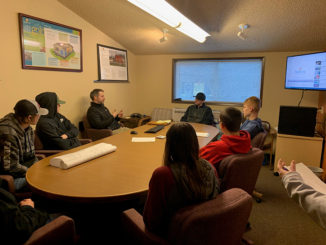
By / Peter Boileau
Chairperson, SMACNA-Western Washington Technical Committee
As you are all aware we have been building our projects based on the 2015 version of the Washington State Energy Code. As of this July, the State of Washington will be adopting the 2018 version of this code, with some jurisdictions (Seattle comes to mind) adopting this code with their own set of amendments later this year, as well. In an effort to get our SMACNA-Western Washington members up to date on the major revisions to this code, your technical and code committee members have begun reviewing the final draft of recommended changes. Our review and commentary below reflect the opinions of our committee team members, who are a mix of design professionals, contractors, and code officials. Your interpretation of these code revisions, as well as the opinion of your local code authority partners, may differ so keep this in mind as you incorporate these code changes into your projects.
Section C102 – Alternative Materials, Design, and Methods of Construction: This section, which addresses alternative materials, design, and methods of construction has been heavily revised. The new language of this section provides much more detail describing how code officials will determine equivalency, specifically, that:
“… the proposed (alternative) design is satisfactory and complies with the intent of the provisions of this code, and that the material, method, or work offered is, for the purpose intended, not less than the equivalent of that prescribed in this code in quality, strength, effectiveness, fire resistance, durability, and safety.”
The revision further states that if the reviewing code official does not believe that the proposed alternate approach is satisfactory the code official is obligated to “… respond in writing, stating the reasons why the alternative was not approved.”
This revised code language provides more detail on how to determine if an alternative approach is acceptable and formalizes how the code official will address proposed alternative ideas. The committee believes that this revised language is extremely important if you intend to submit alternate materials, designs, or methods of construction on your project when the 2018 code takes effect, and if you choose to do so you must provide clear, highly detailed reasoning when seeking an alternative approach on your projects.
Section C106 – Building documentation and close-out requirements: This section and its related sub-sections have been enhanced to include additional close-out documentation at the time of final inspection. Contractors will now be required to provide location and model numbers for each piece of mechanical equipment installed on their as-built drawings for review by the authority having jurisdiction (AHJ). In addition, each piece of equipment installed and its associated system that requires “regular maintenance” shall now bear a label attached to that equipment that provides operations and maintenance information in the form of “… the title or publication number for the operation and maintenance manual for that particular model and type of product.”
The committee believes that this new requirement is promoting the use of a two-dimensional bar code or QR code provided by the equipment manufacturer to meet these requirements, and will more easily provide service personnel the specific information necessary to properly operate and maintain this equipment. It is recommended that our SMACNA members purchasing and installing equipment be sure to ask our equipment manufacturers to supply these QR codes on all new equipment purchased in the future.
Section C104 – Inspections: This section and its related subsections have been significantly rewritten with several interesting new interpretations and enhancements. Subsection C104.1, which describes the general requirements of an inspection has the added language that states, “Approval as a result of an inspection shall not be construed to be an approval of a violation of the provisions of this code…” which in the committee’s mind means that if an inspector approves a non-code compliant installation that does not make it a legal installation at this location or in other areas of a project, or on future projects.
Subsection C104.2.4, which describes mechanical installations, now includes requirements that the inspector must verify that both the type and size of equipment meets code requirements, as well as verifying that the installation meets minimum fan efficiency and heat recovery performance requirements as required by code, approved plans and specifications. The committee’s opinion on this added language is that it is both burdensome and untimely for the inspector to be tasked with verifying size and performance requirements of installed equipment, as this has been the responsibility of the plan reviewer in the past. If installed equipment does not meet either sizing or performance code requirements after being installed and inspected it would be costly to modify or replace this equipment so late in the construction schedule. Our committee believes that this section needs to be amended to require review and approval of equipment sizing and performance be completed and documented during the permit review process, followed by verification of installation of the approved equipment during the on-site inspection process.
Section C402.1 Building Envelope Requirements: The 2018 Washington State Energy Code (WSEC) now provides for a new category of building, called “low energy buildings” and described in subsection C402.1.1.1. This new subsection provides maximum heating energy limits for this type of building, as well as some descriptive language on types of buildings that might qualify for this category.
Previous codes allowed for a “semi-heated” building, and this category of construction is still allowed, as described in subsection C402.1.1.2. The semi-heated building requirements have been traditionally used in the past for construction of all-types of warehouse and manufacturing facilities and has been a popular and cost-effective alternative approach to building this type of structure. The requirements for permitting a semi-heated building are now less prescriptive than in the past, which in the committees mind is not a good thing and therefore advises our SMACNA partners to carefully review this new section if you will be working on this type of building under the 2018 WSEC.
Section C402.5.3 Rooms containing fuel burning appliances: This subsection has been almost completely rewritten to describe the requirements for what we typically call “furnace and boiler rooms”. Since there is significant mechanical scope and cost associated with work in these rooms the revisions to this section describing how these rooms need to be built under the 2018 WSEC needs to be better understood.
The first part of this code subsection now states, “Where combustion air is supplied through openings in an exterior wall to a room or space containing space conditioning fuel-burning appliances, one of the following shall apply:”
This opening statement does not specify whether or not combustion air is directly connected to the fuel burning appliance or not, as it only references “openings in an exterior wall” as described above. This subsection provides further requirements for these rooms as follows: “The room or space containing the appliance shall be located outside of the building thermal envelope.”
This method of compliance would require that the furnace or boiler room be on the perimeter of a building and the surrounding interior walls, floor, and ceiling be constructed to meet building thermal envelope requirements, which in the committee’s experience is unusual. The more common approach would be described next: “The room or space containing the appliance shall be enclosed and isolated from conditioned spaces inside the building thermal envelope. Such rooms shall comply with all of the following:”
This section describes thermal envelope and envelope opening sealing/gasketing requirements, as well as insulation requirements for pipes and ducts, including insulating all combustion air ducts in these rooms.
This subsection then deletes the previous exclusion for allowing “direct vent appliances with both intake and exhaust pipes installed continuous to the outside” from meeting code requirements for rooms containing fuel burning appliances. It then adds an exclusion for fireplaces and stoves, which reference installation requirements of both the International Mechanical Code (IMC) and International Building Code (IBC). Unfortunately, this rewritten section does not reference these codes for furnace or boiler installations, which, in the committees mind, it should. It is therefore incumbent on our SMACNA members to coordinate our IMC and IBC requirements with the new WSEC requirements for these installations.
In future articles, the committee will continue to review and provide our thoughts on the looming 2018 Washington State Commercial Energy Code requirements. As this code is currently scheduled for adoption in July of this year, and we urge our SMACNA partners to become educated in these significant code changes, so we are prepared when this new code becomes our guideline for design and construction of our work in the future, as likely no forgiveness will be granted for lack of understanding these new code requirements. ▪



